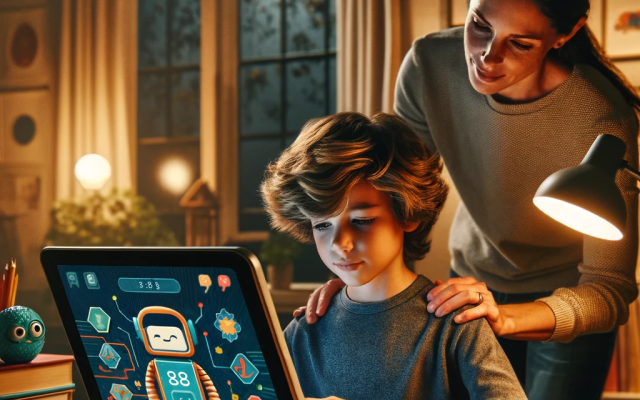Valeria Cristino, support teacher, recounts her experience
Valeria Cristino, primary school teacher with a degree in Primary Education Sciences, discovered her passion for teaching during her years as a trainer for the Fondazione Mondo Digitale. With a background in IT, she wants to promote creative, digital and inclusive learning in schools, capable of instilling curiosity and a love of learning in her pupils. Today, Valeria is a support teacher and has been involved in the testing phase of Pathway Companion, as a trainer for other teachers. She is therefore very familiar with the applications of the intelligent tutor, and particularly appreciates its simplicity of interaction with the user and its ability to adapt to the requirements of personalised teaching.
What difficulties do you face as a support teacher?
I have been working in primary school for two years, and I find myself dealing with pupils with very different needs. Together with the group of teachers in my classes, we are always looking for ways to adapt the content and allow everyone to understand and learn, for teaching that is suited to different needs. We are always looking for new aids, especially in the digital field: publishers have books adapted with legible fonts and simplified text, but they are often used by pupils with diverse needs, and there is no real possibility of adapting them to the individual.
Can AI make this difference in everyday communication?
First of all, I see a lot of misinformation among adults about the everyday usefulness of AI tools. Conversational models such as ChatGpt are often not used correctly, and general training would be needed. For example, many sources are not verified and turn out to be incorrect. The most common use is for text correction, which does not fully exploit their potential. When used correctly, these tools can be a formidable aid in structuring teaching materials or setting up graphics, but also in structuring documents from scratch in an effective manner for the purposes of content comprehension.
What do you think of the potential of AI for content personalisation, especially for the learning of children with special needs?
Speaking of the Pathway Companion platform, which I have had the opportunity to experiment with and test extensively, I consider it a useful tool because it allows you to organise material in a very clear way with a simple user interface that is highly understandable for all carers. This is its first strength. Secondly, the content produced based on adaptation requests is very interesting, as is the possibility of personalising it at a later stage. The platform is very versatile, offering the possibility of creating an audio track and structuring assessment tests related to the adapted text.
Speaking of the various possibilities offered by Pathway Companion, which features do you find most useful?
First of all, after logging in, you can create a student profile, which allows you to store all content in a single virtual space. From there, you can edit texts provided by us teachers, but also ask the chatbot for new content. The final output of the adapted content, which can be formatted and even summarised by voice, is also a great help. In my opinion, this feature can really help students to internalise the content more immediately.
The final tests are very interesting because they can be modified according to the level of learning. Finally, there is also the possibility of creating concept maps.
Can you give us some examples of how Pathway Companion makes a difference in the learning of children with SEN?
I see it as very useful for oral subjects, for example, because when we ask for a text to be adapted, the result is truly simplified content. For example, you can obtain a more readable font, with some words highlighted, a glossary in the margin, all supports that are not available in the textbook. There is also the possibility to explore very abstract concepts in depth, focus on what interests you, take final tests and monitor comprehension. The final assessment allows you to adapt the content by addressing weaknesses. Over time, it is interesting to evaluate feedback on progress.




